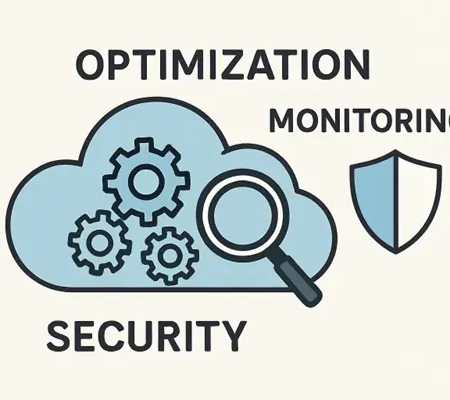The Shift Towards Hybrid and Multi-Cloud Strategies
Cloud computing is rapidly evolving as organizations strive to optimize performance, agility, and cost-efficiency. Increasingly, companies are adopting hybrid and multi-cloud strategies that integrate private, public, and on-premises environments to boost operational flexibility and resilience. By taking a hybrid approach, businesses can preserve sensitive workloads within private infrastructure while leveraging the expansive capabilities of public cloud services for scalability and non-critical applications.
Monitoring and managing the performance of cloud ecosystems, especially as they become more complex, remain crucial components. Strategic investments in robust AWS monitoring solutions deliver clear visibility into infrastructure health and resource consumption. Proactive AWS monitoring not only enables real-time troubleshooting and automated insights but also ensures businesses can fully capitalize on cloud investments and streamline resource allocation as they continue to expand or diversify their environments.
Integrating AI and Machine Learning for Cloud Optimization
Artificial intelligence (AI) and machine learning (ML) are at the forefront of cloud optimization. Leading cloud providers have integrated AI/ML tools into their platforms, making sophisticated analytics accessible to organizations of all sizes. These technologies automate resource provisioning, predict workload spikes, and optimize compute power allocation to reduce latency and enhance efficiency. For example, financial institutions utilize AI for real-time fraud detection, while retailers harness ML to personalize shopping experiences and better predict customer behavior. As these capabilities continue to mature, they are poised to drive significant innovation and competitive differentiation in virtually every sector.
The adoption of automation through AI/ML not only accelerates time-to-value for new cloud initiatives but also reduces manual intervention and operational overhead. This shift frees IT teams to focus on innovation rather than troubleshooting and routine maintenance.
A comprehensive TVTechnology article discusses the growing integration of AI within cloud computing, particularly through the lens of the cable and telecom industries, highlighting how AI cloud platforms are evolving to support advanced AI technologies without complete infrastructure rebuilds.
Implementing Effective Monitoring and Management Tools
Cloud environments today are inherently complex, often spanning multiple cloud providers and orchestration platforms like Kubernetes. Relying on fragmented, traditional monitoring tools creates visibility gaps and can hinder performance optimization. Modern solutions must offer unified visibility across multi-cloud setups, support dynamic workloads, and provide intelligent alerts to minimize downtime. Organizations increasingly turn to comprehensive platforms that consolidate health metrics, automate anomaly detection, and deliver actionable insights, ensuring quick mitigation of performance bottlenecks. The adoption of centralized management tools creates a cohesive performance strategy, one that minimizes manual intervention and maximizes new service delivery for customers.
Addressing Security and Compliance Challenges
Security is a top priority as the cloud proliferates across industries. Legacy perimeter-based approaches have proven insufficient in the face of sophisticated threats and distributed architectures. Enter Zero Trust security frameworks, which assume every access attempt—inside or outside the network—could be a potential breach. Zero Trust emphasizes continuous verification, granular authentication, and least-privilege access as core tenets. Cloud service providers now embed advanced security controls, like multi-factor authentication (MFA), encryption at rest and in transit, and automated compliance checks, into their platforms.
As regulatory pressures increase globally, organizations must remain vigilant, ensuring that they meet evolving compliance requirements while maintaining business agility. More organizations are investing in Zero Trust as their cloud adoption grows, finding it effective in addressing both new threats and strict regulatory standards.
Optimizing Cost and Performance in Cloud Environments
While the cloud offers tremendous flexibility and pay-as-you-go savings, mismanagement can lead to complex billing and uncontrolled costs. The emergence of the FinOps (Financial Operations) discipline helps organizations rein in cloud expenditures, aligning usage with business priorities through real-time budget tracking and automated optimization recommendations. FinOps practices promote financial accountability, resource efficiency, and predictive planning by bringing finance, engineering, and IT teams together. Core FinOps strategies include deploying real-time dashboards for spend analysis, enabling automated rightsizing of resources, and adopting reserved capacity or savings plans based on historical data and forecasts. These practices are vital as cloud investments scale and as organizations pursue digital transformation initiatives.
Enhancing Business Resilience Through Cloud Strategies
Cloud-powered business resilience hinges on the agility and flexibility of modern infrastructure strategies. Enterprises are blending public and private clouds to create agile technology ecosystems that adapt to changing business needs and regulatory environments. Hybrid cloud adoption provides the tools needed to scale capacity rapidly, shift workloads across platforms during outages, and maintain continuity even amidst disruptive events. Unified management platforms and automation further strengthen resilience by simplifying integration, orchestration, and policy enforcement across diverse environments.
As hybrid cloud technology evolves, emerging solutions such as automated disaster recovery, AI-driven security policies, and unified management portals are set to enhance enterprise resilience further. These advancements allow organizations to proactively mitigate risks, respond to incidents faster, and sustain operations without compromise.
Conclusion
Today’s IT leaders face a highly complex, rapidly evolving, and often challenging cloud landscape that demands both strategic insight and technical expertise. Optimizing cloud performance is a multifaceted endeavor, one that encompasses hybrid multi-cloud adoption, seamless AI/ML integration, the implementation of modern monitoring and security frameworks, and disciplined cost management practices. As organizations actively embrace these fundamental pillars of cloud computing and stay well-informed of the latest best practices, emerging trends, and innovative solutions, they are well-positioned to leverage the cloud as a powerful engine for driving continuous innovation, enhancing organizational resilience, and achieving sustainable long-term growth.
Read more: How to Prepare for a Career in Firefighting – The Funny Puns


Comments